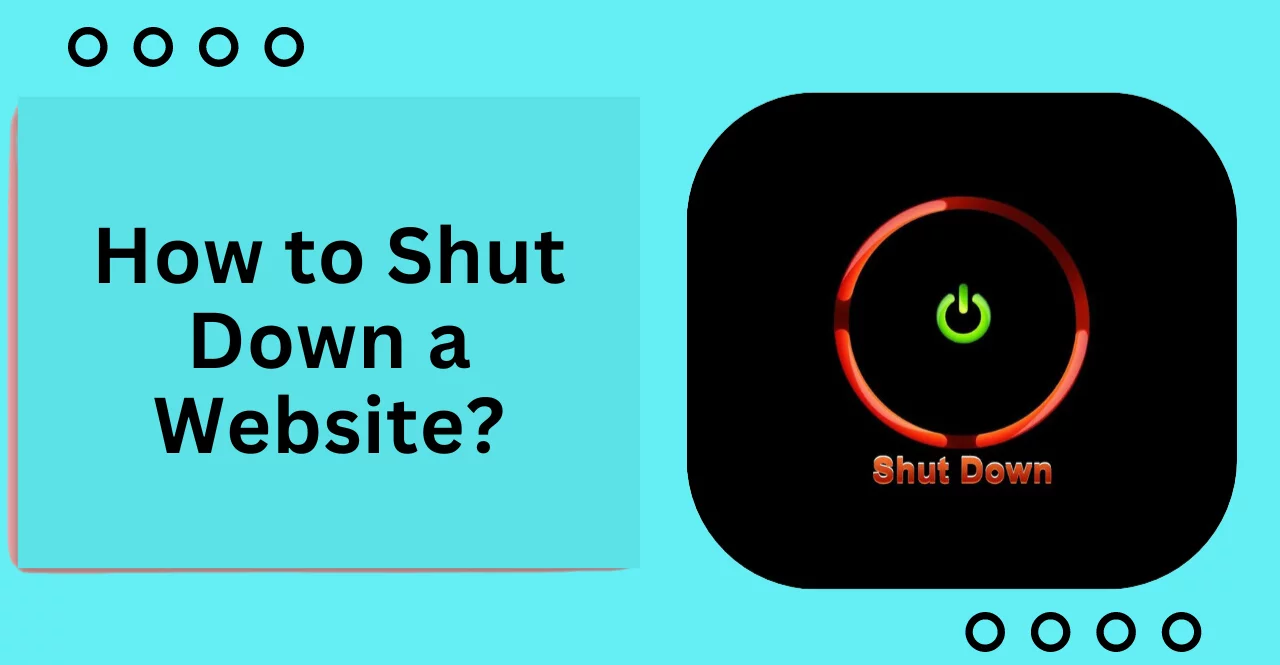Shutting down a website can be a challenging task, especially if the site has been running for a long time or has a significant number of users. There may be various reasons why you need to shut down your website. It could be because of financial issues, rebranding, or the end of a project. Whatever the reason may be, it is crucial to ensure that you shut down your website properly to avoid any adverse impact on your users, your reputation, or your search engine rankings.
Reasons for Shutting Down a Website
There are many reasons why you might decide to shut down your website. Perhaps your business model has changed, and your website is no longer relevant. Maybe you’re unable to maintain the website due to a lack of resources or time. It’s also possible that your website is no longer generating the desired results or revenue. Whatever the reason, it’s important to communicate it clearly to your audience to avoid any confusion or speculation.
Informing Your Audience: What to Say
Once you’ve made the decision to shut down your website, it’s essential to communicate the news to your audience. Be transparent and honest about the reasons behind the shutdown, and thank your visitors for their support. You may also want to provide information on any alternative ways they can access your products or services, such as through social media or a physical location.
Preparing for Shutdown: Backing Up Data and Files
Before you shut down your website, it’s crucial to back up all your data and files. This includes any customer data, analytics, and other important information. You may want to save copies of your website content as well, such as blog posts or product descriptions. This will ensure that you don’t lose any valuable data or content during the shutdown process.
Cancelling Services: Domain Names, Hosting, etc.
To shut down your website, you’ll need to cancel any services related to your website, such as your domain name and hosting. Make sure to check the terms of your contract to avoid any fees or penalties. If you have any subscriptions or auto-renewals, make sure to cancel them as well.
Announcing the Shutdown: How and When to Notify Your Users
Once you’ve prepared for the shutdown and canceled your services, it’s time to announce the news to your users. Choose a time that will minimize the impact on your audience, such as during off-hours. You may want to send an email to your subscribers, post a notice on your website, or share the news on your social media channels.
Redirecting Traffic: How to Handle Incoming Visitors
To minimize the impact on your users, you’ll want to redirect any incoming traffic to a new location. This could be a different website, social media page, or physical location. Make sure to update any links or URLs that point to your website, such as in your email signature or business cards.
Final Steps: Removing the Website and Closing Accounts
Once you’ve redirected traffic, it’s time to remove your website and close any associated accounts. Make sure to delete any sensitive data or files and cancel any remaining subscriptions or auto-renewals. You may also want to consider deleting any social media accounts associated with your website.
Post-Shutdown: Evaluating the Impact and Next Steps
After you’ve shut down your website, it’s important to evaluate the impact on your business and your audience. You may want to conduct a survey or gather feedback to see how your users are affected. Consider your next steps, whether it’s launching a new website, pivoting your business model, or closing your business altogether.
Conclusion:
Shutting down a website can be a difficult decision, but it’s important to handle it professionally and minimize the impact on your audience. By following these steps, you can ensure a smooth transition and maintain a positive relationship with your audience. Remember to communicate clearly and honestly about the reasons behind the shutdown, backup all important data and files, cancel any related services, and redirect incoming traffic to a new location. Finally, evaluate the impact of the shutdown and consider your next steps for your business. By taking these steps, you can shut down your website in a professional and responsible manner.
